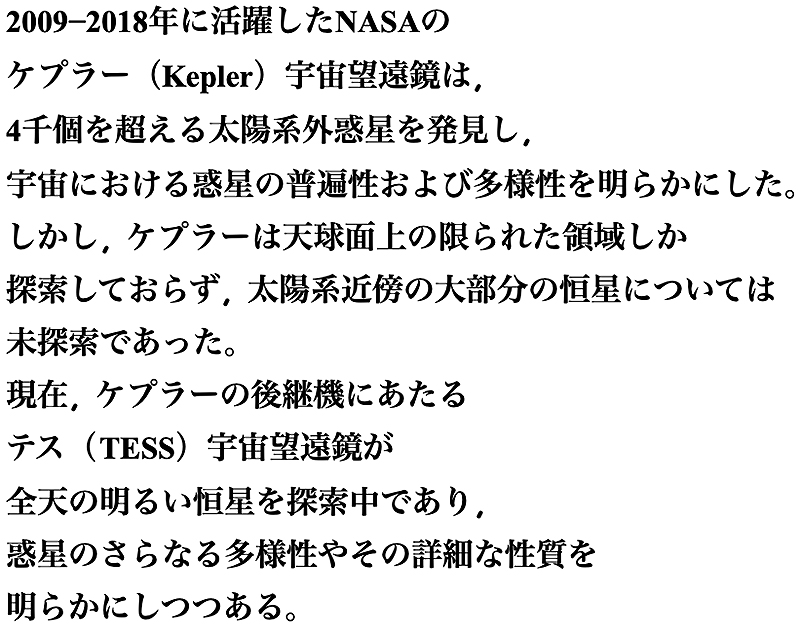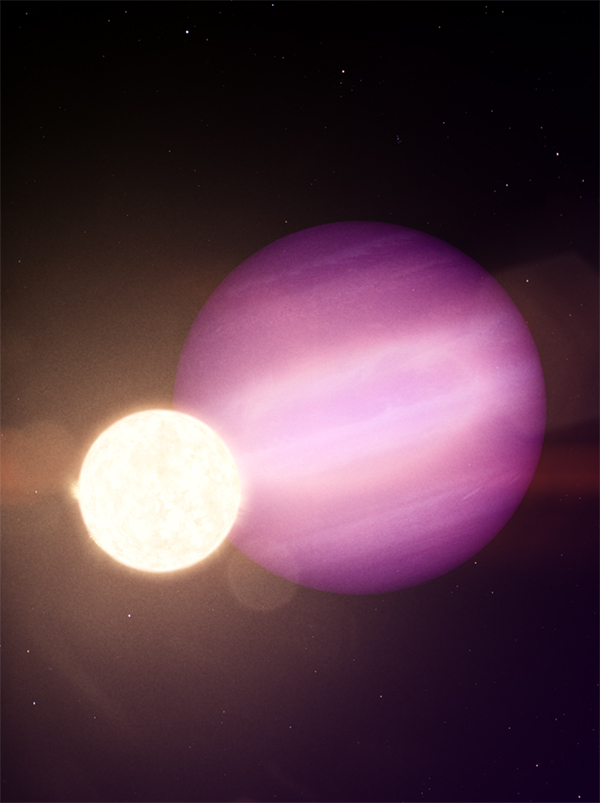Disclaimer: machine translated by DeepL which may contain errors.
Discovery of a Giant Planet Candidate Orbiting a White Dwarf
Akihiko Fukui( Department of Earth and Planetary Science, Project Assistant Professor) |


It is fresh in our minds that M. Mayor and D. Queloz were awarded the Nobel Prize in Physics 2019 for the first discovery of a planet orbiting a star other than the Sun. The discovery in 1995 of a Jupiter-sized exoplanet orbiting its main star with a period of only four days was an "out-of-the-ordinary" planet, and greatly expanded our knowledge of planets in the solar system, which until then had been limited to those in the inner solar system. Since then, exoplanet hunts around the world have led to the discovery of new planets one after another, revealing the abundance of planets in the universe, the existence of a wide variety of planets, and the existence of planets with temperatures suitable for life outside of our system. However, the number of exoplanets discovered so far for which density and atmospheric composition have been observed is still small, and the composition and origin of most of them are not well understood. In addition, the search for exoplanets has been conducted mainly for stars with masses comparable to that of the Sun, and the search for more "exotic" stars (low/high-mass stars, white dwarfs, etc.) has not yet progressed sufficiently.
The TESS space telescope, launched in 2018, conducts planetary searches for bright (near-solar system) stars that are widely distributed throughout the sky, searching for planets whose density and atmospheric composition can be studied, as well as for planets orbiting a wide variety of stars. TESS searches for planets using a method called the "transit method," which was also used in the Kepler search. The transit method is a method of capturing the main star's attenuation as the planet passes in front of the main star (transit), and the radius of the planet can be measured from the attenuation rate of the main star. It is also possible to measure the mass and atmospheric composition of a discovered planet by conducting follow-up observations of the planet from the ground or from space.
On the other hand, TESS observations alone can only discover "candidate" planets. To confirm whether a candidate planet is a real planet or not, follow-up observations using ground-based telescopes are indispensable. To this end, our research team has developed three MuSCAT (MuSCAT), which can simultaneously observe planetary transits at multiple wavelengths (mounted on telescopes in Okayama, Spain, and Hawaii, respectively). We are now conducting comprehensive observations of the planet candidates discovered by TESS using these instruments.
 |
||
| Imaged image of a giant planet (WD1856b, right) orbiting a white dwarf star (WD1856+534, left ). The planet is about seven times larger than the white dwarf. ©NASA's Goddard Space Flight Center |
In this international collaboration, we have discovered for the first time that a planet (or a low-mass brown dwarf) exists in a white dwarf called WD1856+534, one of the objects we observed. A white dwarf is the final form of a star with a mass less than eight times that of the Sun, and is a high-density object that remains at its center after the star runs out of fuel (hydrogen) and expands to become a giant star. This discovery is the first time that planets can exist around such dramatically evolved celestial bodies. This discovery further broadens our concept of "planet" and raises a new question: How did these planets survive the cataclysmic phase of stellar evolution?
The findings were published in Vanderburg et al. Nature 585, 363 (2020).
(Press release, September 17, 2020)
Published in the January 2021 issue of Faculty of Science News
Communicating to Faculty Research Students >


